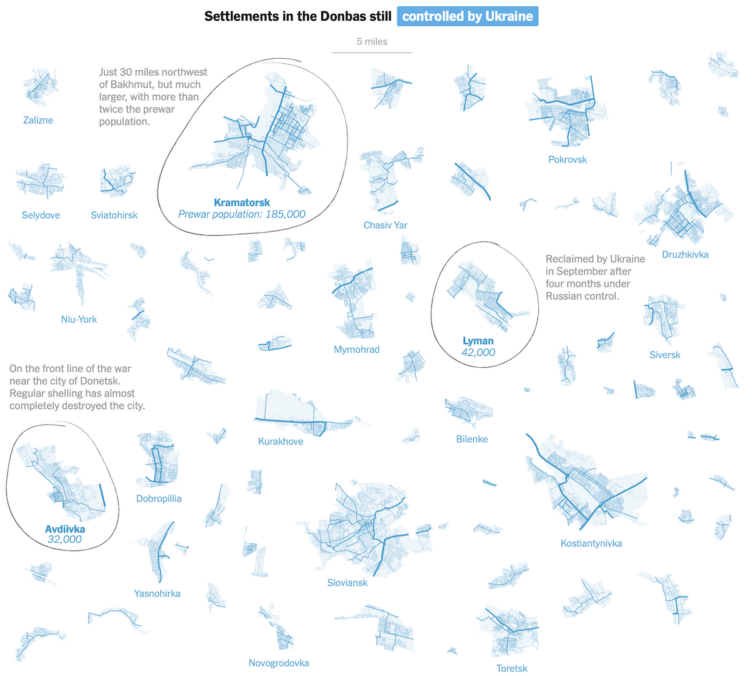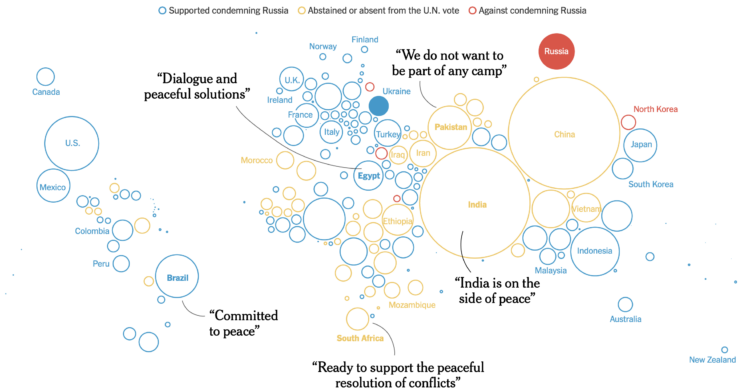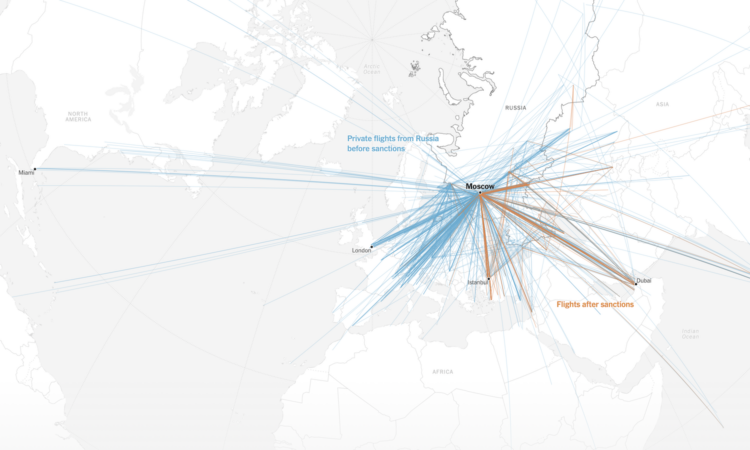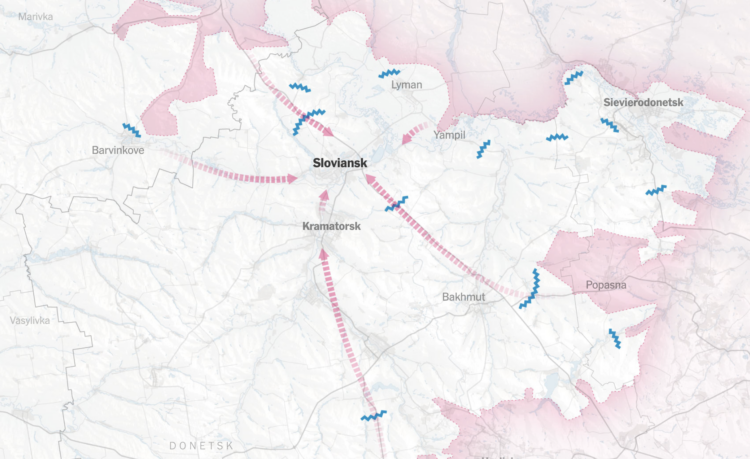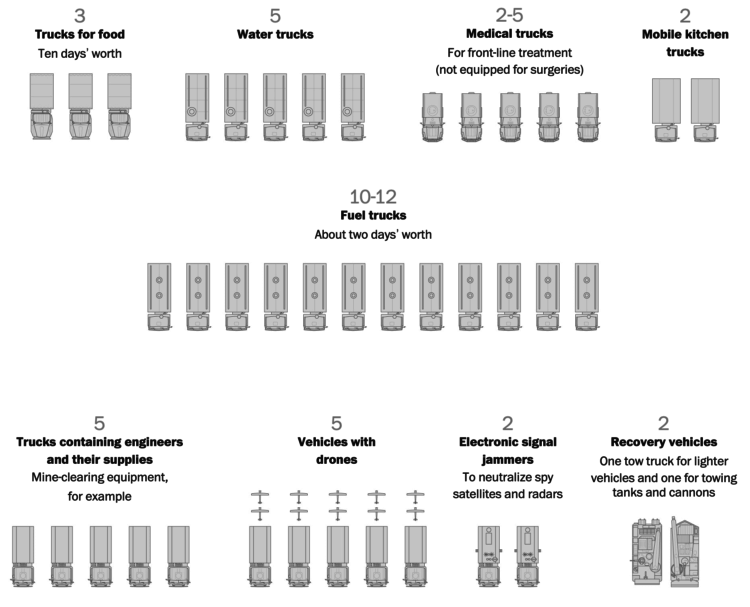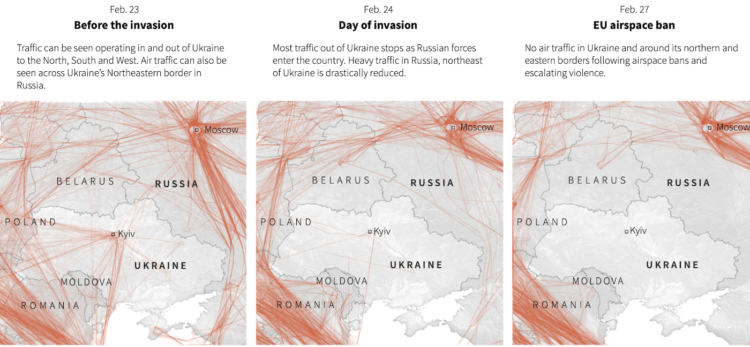For The New York Times, Josh Holder and Marco Hernandez show the areas still controlled by Ukraine and the areas captured by Russia. But instead of a single map, they split up the regions into multiples and arranged them by time.
Tags: New York Times, Russia, Ukraine, war
